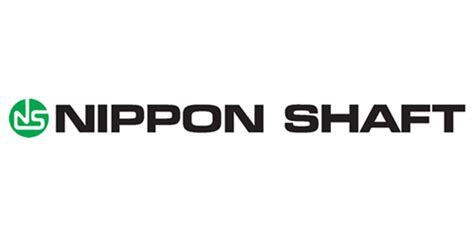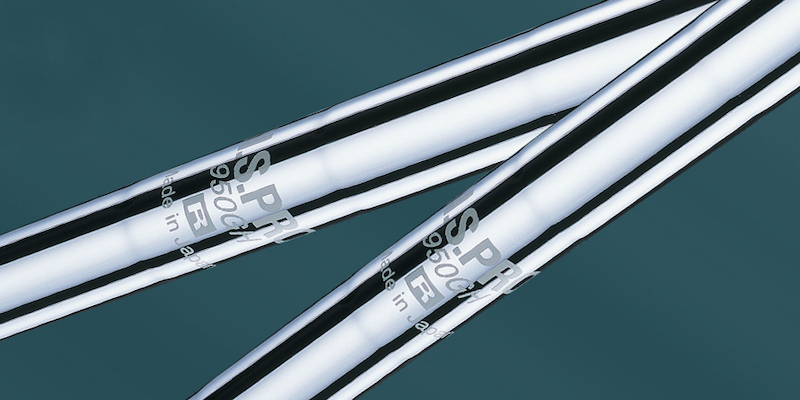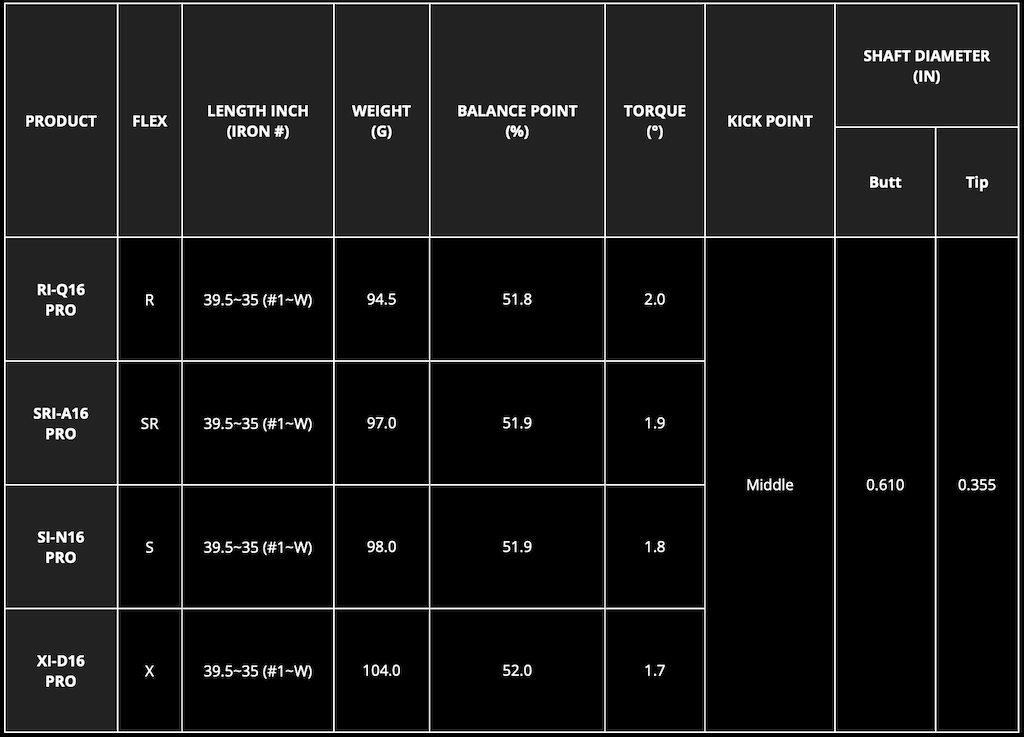
The pressure on golf equipment manufacturers to drive technology forward is unrelenting. Large companies have entire divisions devoted to working on products you may not see in stores for five or even ten years. Algorithms, artificial intelligence, and robots are working, probably at this very moment, to make all of us a little less terrible at this game. Still, some great ideas are around for the long haul. Depending on your age, there’s even a chance you’re playing something that was created before your first day of grade school.
Here’s something kind of mind blowing. With 2024 right around the corner, we are coming up on 25 years since the Nippon N.S. Pro 950GH steel shaft was introduced. You may not know that the 950GH is considered to be the original lightweight steel shaft or that it inspired an entire market segment. Lightweight steel is so pervasive today that we’d find it downright unusual to find a game improvement iron set with a full set of 120-130g shafts, but that wasn’t always the case. For years, it seemed like your options weren’t really options at all and lightweight steel was just a pipe dream.
Though graphite iron shafts have roots going back to the 1960’s, in the 1990’s there was a renewed interest that posed a threat to steel shaft companies, especially in Japan. Graphite’s lighter weight-to-strength ratio and ability to improve launch conditions started making waves and Nippon began looking for ways to retain its customers. It wasn’t an easy road. Reducing weight was easy enough, but it came at the cost of durability, rigidity, and appearance. Nippon’s first pass was universally rejected by consumers and professionals alike. Though surely disheartening, the feedback the company’s engineers received gave them the inspiration needed to bring a better product to market.

They took elements of steel design and married them with concepts learned from manufacturing graphite shafts to build what, at the time, was considered an “ultra-lightweight” shaft that felt and looked great but was stiff enough to be viable on Tour. In addition, the company gained more understanding of distributing stiffness in different parts of the shaft. While this is almost “Shaft 101” at this point, Nippon was walking on the cutting edge with these concepts. By doing things like making the section under the handle a little softer, they could improve feel and save weight for use elsewhere. As another example, they could increase launch angle and distance by manipulating flexibility in the tip section. All this work came to a head with the N.S. Pro 950GH. At less than 100g, it was an instant success, and its introduction paved the way for a new era of steel shaft design.

I understand you probably didn’t wake up today looking for a history lesson on Nippon shafts, but recent events brought this timeless classic into my life, and I was inspired to learn more. Earlier this year, I looked into the unique way Nippon synergizes their steel and graphite shaft lines. As part of that article, I began working with the company’s N.S. Pro Modus Tour 105 shafts. The Modus line’s roots go back to things Nippon learned from the 950GH, drawing off Tour feedback to build a comprehensive line of shafts with different weights and flex profiles.
Unfortunately, if you know much about me, you’ll know I don’t swing the club with much speed and am always looking for ways to hit the ball higher. Even the Modus Tour 105 proved to be a little more shaft than was optimal for me, so I reached out to Hiro at Nippon for some advice. My request was for something a little smoother to swing that helped me get the ball up in the air. He didn’t hesitate for a second before recommending the 950GH, and I was installing a set by the end of the week. What I found was almost instant improvement. The lighter weight and unique flex profile felt like the shaft was working for me rather than against me, and I saw improvements in my launch conditions across the board. Unfortunately, shafts aren’t magic (let me know if you do find one that is), so most outsiders would still say I’m “slow and low” even with the 950GH’s in my irons, but it’s a tangible difference. Better yet, my confidence at address has increased without having the nagging concern that I need different iron shafts in the back of my head.
It all goes to show that great ideas have staying power, and this shaft that Nippon built almost 25 years ago doesn’t seem like it will be going away any time soon. There are many of you out there that are in the same predicament I am, and a look at this timeless classic may be worth your time. More information on the entire line of Nippon steel and graphite shafts can be found on their website, nipponshaft.com.












Nice read. I enjoyed seeing how Nippon really launched into that space. They are my first preference when it comes to steel shafts.
Any idea if that line gets a refresh as they continue to learn more?
Enjoyed the article. Played a set of the 950s in a set of Callaway Fusions many years ago
[QUOTE=”Scooby45, post: 12015031, member: 62865″]
Nice read. I enjoyed seeing how Nippon really launched into that space. They are my first preference when it comes to steel shafts.
Any idea if that line gets a refresh as they continue to learn more?
[/QUOTE]
Thanks Scooby – They did drop the 950GH Neo a short while back. To me, it looks like a very similar concept with tweaked EI curve. I have not tried it.
[QUOTE=”Hawk, post: 12015107, member: 1193″]
Thanks Scooby – They did drop the 950GH Neo a short while back. To me, it looks like a very similar concept with tweaked EI curve. I have not tried it.
[/QUOTE]
I play the 950 Neo R flex and really like them
Good read this morning! I don’t fit into the 950GH, but it’s interesting how they brought it to market, kind of failed, yet came back after gathering feedback and created something that’s still around 25 years later. I’ve enjoyed the Modus3 lineup, so enjoyed reading more about Nippon.
I may have to try these in a X flex. The swing optimizer had me in the Modus 105x but I got scared off at the time by the flex stamp, which was silly.
was fit into these during my only fitting
[QUOTE=”Scooby45, post: 12015226, member: 62865″]
I may have to try these in a X flex. The swing optimizer had me in the Modus 105x but I got scared off at the time by the flex stamp, which was silly.
[/QUOTE]
The 105 and 950gh have very different performance profiles. The 105 doesn’t work well for me but I can hit the 950 and the 120.
[QUOTE=”Scooby45, post: 12015226, member: 62865″]
I may have to try these in a X flex. The swing optimizer had me in the Modus 105x but I got scared off at the time by the flex stamp, which was silly.
[/QUOTE]
[QUOTE=”Chef23, post: 12015238, member: 48542″]
The 105 and 950gh have very different performance profiles. The 105 doesn’t work well for me but I can hit the 950 and the 120.
[/QUOTE]
Agreed. Even at the lighter weight, the 105 in X is going to feel very stiff in my opinion. It’s a really unique profile and many people will say the 120 feels softer than the 105.
Thanks for providing this, I truly enjoyed the read. The 950’s are a shaft I have looked at in the past but never pulled the trigger on. I might need to re-visit these.
[QUOTE=”Chef23, post: 12015238, member: 48542″]
The 105 and 950gh have very different performance profiles. The 105 doesn’t work well for me but I can hit the 950 and the 120.
[/QUOTE]
I ended up in the 120 and really enjoyed so now I’m curious.
[QUOTE=”Hawk, post: 12015249, member: 1193″]
Agreed. Even at the lighter weight, the 105 in X is going to feel very stiff in my opinion. It’s a really unique profile and many people will say the 120 feels softer than the 105.
[/QUOTE]
Agreed the 105 plays stiffer. The 120 definitely plays softer than the 105 in the same flex.
[QUOTE=”Scooby45, post: 12015271, member: 62865″]
I ended up in the 120 and really enjoyed so now I’m curious.
[/QUOTE]
I found the 950 to launch higher and be softer in the tip than the 120. I would have stayed in the 120s but my hands were bothering me so I swapped them out for graphite.
[QUOTE=”Chef23, post: 12015361, member: 48542″]
I found the 950 to launch higher and be softer in the tip than the 120. I would have stayed in the 120s but my hands were bothering me so I swapped them out for graphite.
[/QUOTE]
hmm, thanks for the feedback there, if the tip gets too soft I get scared off
What. A. Piece.
Well done Hawk!
I actually have fond memories of the 950’s, had them in a set if Nickent 3DX Pro’s.
One of the best articles I’ve read in a while @Hawk
[QUOTE=”Scooby45, post: 12015370, member: 62865″]
hmm, thanks for the feedback there, if the tip gets too soft I get scared off
[/QUOTE]
I don’t think the 950 is the right fit for you then.
[QUOTE=”Chef23, post: 12015429, member: 48542″]
I don’t think the 950 is the right fit for you then.
[/QUOTE]
me neither
When I played steel I gave these a run, but they were a bit too high launch for me. Modus 105 or 120 were a better fit.
But like most of the Nippon line up, they felt great.
Another shaft that has stood the test of time is the Aldila NV line up.
Nice piece [USER=1193]@Hawk[/USER]
Still have these shafts in my Epon irons. Can’t go wrong with them.
I didn’t play the 950 but did play the 1030 which was the shaft made for Cobra in the S3 irons. I believe those played between the 950 and 1050. I really liked those.
[USER=1193]@Hawk[/USER] this was a fun read. These are definitely a classic shaft that has stood the test of time…nearly 25 years which is crazy.
I would never call you slow and low. At least not to your face.
[QUOTE=”ddec, post: 12015599, member: 782″]
[USER=1193]@Hawk[/USER] this was a fun read. These are definitely a classic shaft that has stood the test of time…nearly 25 years which is crazy.
I would never call you slow and low. At least not to your face.
[/QUOTE]
It’s why I try to avoid you. Hate having to compare myself to your moonshots.
[QUOTE=”Hawk, post: 12015736, member: 1193″]
It’s why I try to avoid you. Hate having to compare myself to your moonshots.
[/QUOTE]
I can make it rain
Enjoyable read. Amazing longevity for those shafts!
For 9 seasons I played a set of Nike VRS Covert 2.0 Forged irons. I bought them specifically because they were the only irons that came stock off the rack with 950GHs. Of all the stock shafts I tried (TT DGs, Project Xs, even KBS Tours) the 950GH was the one that felt the most by far like they were working for me and not the other way around.
I just turned 70 this year, and felt the need to move from stiff to regular flex, so I treated myself to new irons. I ended up with Mizuno 923 Hot Metals with, you guessed it, 950 GH Neos. And I love them.
Great article [USER=1193]@Hawk[/USER]. I’ve never played the 950GH shafts that I can remember but if I ever back to steel from graphite, Nippon will be the first stop. Huge Modus fan.
Big fan of Nippon. Always interesting how when something works it just works, like for this being 25 yrs old, DG’s and more that last for generations.
[QUOTE=”Louis_Posture, post: 12016732, member: 77191″]
In a set of JPX 923 Tour irons I play the 950GH Neo shaft and like the performance. Compared to the original 950GH, which I had played in a set of Ping S56, the Neo is a little less smooth-silky feeling but provides more accurate shot dispersion.
[/QUOTE]
Appreciate the comparison.
Nice write up. I have a set of 950GH Neo R flex in my ZX5mkII. That weight range and profile has been good for me. I’ll look forward to comparing them to my new Dart V TSPX 90 F3, which will be going into my 2021 Titleist T300s.
[QUOTE=”Hawk, post: 12016766, member: 1193″]
Appreciate the comparison.
[/QUOTE]
If you have the opportunity to do so it might be worthwhile to do a comparison of the original 950GH to the 950GH Neo. For example if a 6-iron comparison was done, same head model, one shafted with the original and the other shafted with the Neo, it might provide useful information for players considering one or the other shaft.
I am a big fan of Nippon. I had these in my old Nickents and remember liking them. That’s awesome you find them good for you. I love how you nonchalantly say, “…reached out to Hiro at Nippon “.like it’s no big deal. :LOL: Very cool.
I have always been interested in swinging this shaft but never have had the opportunity and my brief time with a set of Modus3 105’s in a set of Srixons was fun although my elbows did not like steel any longer. Great article [USER=1193]@Hawk[/USER] .
Any thoughts on how different or similar this shaft is compared to the 850gh? Obviously a weight difference but how noticeable would it be? Reason for asking is I was fit into the 850 but it’s not an option from the OEM for the club heads I was fit to. But the 950 is. So I’m wondering if it’s worth it to deal with either paying through the nose for a customized build or pulling and changing shafts, or if the 950 would be close enough.
[QUOTE=”gonyr, post: 12017097, member: 42934″]
Any thoughts on how different or similar this shaft is compared to the 850gh? Obviously a weight difference but how noticeable would it be? Reason for asking is I was fit into the 850 but it’s not an option from the OEM for the club heads I was fit to. But the 950 is. So I’m wondering if it’s worth it to deal with either paying through the nose for a customized build or pulling and changing shafts, or if the 950 would be close enough.
[/QUOTE]
From what I’ve seen online:
[LIST=1]
[/LIST]
In terms of weight, 10g or so isn’t exactly nothing. I won’t say it’s going to be a drastic difference, but that’s a 10% gap. If I was giving advice, I’d say go with what you were fit into. If anything, you won’t have that “should I have just got the 850” in your head.